 Published
Publishedon
By
OWNER: Marie McCarthy; URL: fiatluxsf.com; FOUNDED: 2011; Opened featured location: 2021; AREA: 500 square-foot showroom; 1,000 square feet total; Buildout cost: $80,000; DESIGNER: Noz Design; TOP BRANDS: Fiat Lux, Venyx, Celine Daoust, BVLA, Digby and Iona; EMPLOYEES: 2 full-time, 1 part-time
WHAT DO YOU get when you mix designer jewelry with elevated and vibrant interior design, a high-end piercing studio, a tattoo parlor sensibility and a dash of punk-rock rebelliousness? The newest location of San Francisco-based Fiat Lux, the brainchild of owner Marie McCarthy.
By 2021, McCarthy already owned a body art studio that had pushed the medium into the luxury space, as well as a beloved 10-year-old neighborhood jewelry store that felt dark and edgy. It’s unsurprising, then, that her second location of Fiat Lux is equally innovative, giving San Francisco’s Pacific Heights residents a one-of-a-kind jewelry shopping and luxury piercing experience.

Just 500 square feet, the retail space still gives a sense of airy openness. That’s due to a combination of thin-profile cabinet showcases lining the showroom walls and well-lit, bright white surfaces punctuated by pops of color. The concept, developed by interior designer Noz Nozawa, is both chic and whimsical, a perfect fit for the residents of posh Pacific Heights.
Owner Marie McCarthy (right) with head piercer Perry Doig and interior designer Noz Nozawa.
“We’d just been through a pandemic, and I wanted something joyful. I wanted to make something really over the top, really different from what people have in their homes or that they would traditionally see in the retail space,” says McCarthy.
As luck would have it, Nozawa was a client of head piercer Perry Doig, and she hit it off with McCarthy just as she was considering opening a second location.
“We talked nonstop for an hour,” says McCarthy of their first encounter. “She has titles like ‘The Queen of Color’ and has been featured in Architectural Digest. I said, ‘OK universe, I hear you.’”
McCarthy says that it was great to go into a project with someone with whom she had already formed a connection. “We understood each other, so it made the project easy and joyful. If I could, I would design a new store with her every year.”
What looks like art on the walls is actually wallpaper surrounded by light blue trim. Local artist Caroline Lizarraga was enlisted by store designer Noz Nozawa to drip gold resin from the top of the wallpaper, which demonstrates the store’s rebellious spirit in subtle fashion. A seating area features a vintage couch reupholstered in modern stripe.
Pierced with Light
While the showroom is light, inviting and conducive to conversation, that’s not all there is to this iteration of Fiat Lux. Clients who arrive for a piercing are led from the showroom into a small hallway painted with images of the store’s jewelry by local artist Caroline Lizarraga (McCarthy calls this hallway a “palate cleanser”). Through a doorway straight ahead, clients enter the “procedure room” — an unexpectedly large space that feels part medical examination room and part Victorian dining room, with light blue walls, white trim and a stunning art deco chandelier.
The procedure room was conceived and built out by Doig, who had envisioned creating a luxury piercing space for years. “A piercing studio was once thought of as a scary place,” says Doig. “I wanted to give people a place that was more gentle, where they could let down their guard.”
Doig says that the piercing industry itself is only 45 years old, and that for the first 20 years, it had a reputation as being for sexual deviants and the gay community. Then, it morphed into a punk-rock-like subculture, a thing people would do to break from social norms. When Doig was hired as head piercer in 2012, the original location of Fiat Lux was just a year old, and he and McCarthy shared a vision to show their clientele that piercings could simply be a way to wear more fine jewelry.
“When I say ‘high-end piercing,’ it’s a mixture of selling jewelry that, piercing or not, anyone would look at and say, ‘That’s beautiful,’ and also having a studio where people come to us because we have a reputation for being welcoming, gentle and attentive,” says Doig. “We want to give people 30 minutes, 45 minutes, an hour. I don’t want people to say, ‘I know this place that does piercings,’ I want them to say, ‘I have a friend who does piercings.’”
Pops of color and unique touches like jaguar-shaped cabinet pulls lend personality to the Fiat Lux showroom.
Wild Kingdom
Back in the showroom, the colorful trees and animals on the walls are the first thing to draw the eye. The art appears to be murals but is in fact expensive wallpaper by Voutsa. The master stroke is gold resin drips, painted by Lizarraga, that start at the top of the wall panels and trickle downward.
“Noz said she wanted me to buy this expensive wallpaper, and then she would destroy it with gold drips,” says McCarthy. “I said, ‘You are so wild, and I’m in.
Let’s do it.’”
Adds Doig: “We had a reputation at the other location for being a little bit punk rock, so we needed to do something that was a little bit destructive. Ruining expensive wallpaper seemed like the perfect touch.”
The tiled floor is painted with a black-and-white striped snake by Lizarraga with a blue gemstone in its forehead (traditional for snake jewelry), and art deco pendant lighting hangs elegantly from the ceiling. An octagonal showcase occupies the center of the show floor and displays fine jewelry manufactured especially for piercings. Around the perimeter, the wall showcases are painted a cornflower blue that’s slightly darker than the wallpaper panel trim.
While some jewelry retailers might shy away from bright colors that could compete with their product for attention, McCarthy says the colors help create an atmosphere of joy and wonder. “People come in and are inspired, and that translates over to the jewelry. They see the space first and are excited and blown away, then they move to the jewelry and it’s like nothing they’ve seen, so it really works well together.”
The piercing room is quiet and elegant with a chandelier overhead.
The design by Nozawa fuses vintage and modern, a combination that McCarthy has always loved. In fact, the store’s inventory reflects the same blend of old and new, incorporating vintage and estate jewelry with new jewelry by independent designers.
“I’m particularly interested in small-batch handmade jewelry. I find it more sentimental and important,” says McCarthy. “I have put some jewelry in the Fillmore [Pacific Heights] location that I’ve always loved. I had seen one designer 10 years before at the Goldsmiths’ Fair in London that didn’t fit my brand at the time, but at Fillmore, I could scoot the edges of the brand a little bit so I could bring in the designers that I had been personally obsessed with for a long time.”
Unlike other stores, which often organize their jewelry by designer, Fiat Lux organizes product by theme. “I have a case for flora and fauna, one for eye talismans, one for the human condition, one for architecture, etc. It’s more difficult than grouping by designer, but I wanted to create a little more magic and story so I have more talking points with the client,” says McCarthy.
Doig says this strategy helps Fiat Lux to sell more jewelry to each client. If the jewelry is organized by designer, says Doig, it makes it too easy for people to go directly to what they know. “So if you’re buying based on the designer, you may not get an opportunity to see what other piece may play well with that person’s jewelry. Mixing it up by theme and design element gives people an opportunity to branch out their collection beyond the designers they already know.”
Straight ahead through the showroom is a short hallway leading to the piercing room.
Humble Beginnings
At the age of 23, McCarthy dreamed of a space that would combine tattoos and piercing with fine jewelry. Her then-landlord saw something in the aspiring entrepreneur and gave her the money to start the business: Rose Gold’s Tattoo & Piercing, which she still owns today.
After about 15 years in business, McCarthy decided to separate the jewelry operation from the tattoo parlor. She started with $12,000 and opened “the littlest store in San Francisco”: a 200 square-foot store in the Mission District called Fiat Lux. (The store later moved to a larger location nearby.)
“It was dark and punk rock and really cool,” says McCarthy. “That’s how I was at that time, going to rock and roll shows and partying and having fun. Now that
I’ve grown up a little bit, the new iteration is still punk rock in spirit but a little richer.”
She explains that her idea “has always been exuberance, whether it’s in the punk rock black metal version at Mission or the wild atmospheric fizzy colors at Fillmore. It was to go from a hectic color out front to a calming hallway in the middle to the relaxing atmosphere of the piercing room; an amuse bouche to a palliative to duck confit in clear broth.
“We give a high-end luxury experience with the freedom of being tongue in cheek. People find it refreshing and freeing.”
1. LIGHT IN LATIN. “Fiat Lux” is Latin for “let there be light.” It’s about radical transparency and education, as well as the permanence and impermanence of light, says McCarthy. “We’ve always been open with facts and education about jewelry, even doing workshops with our clients to help them to better understand the medium. Our logo is the eye radiating knowledge.”
2. NEXT-LEVEL PIERCING. When McCarthy began in the jewelry business, she brought her piercing and tattoo shop background with her — and the goal was to integrate the two. “I noticed there was a big part of the population who didn’t feel comfortable going into street shops to get pierced, so I wanted to open it up to those people,” she says. “Piercing can be spontaneous and a fun placeholder for jewelry, or it can be therapeutic.”
3. TALE OF TWO VIBES. The location in San Francisco’s Pacific Heights neighborhood is vastly different from the original Mission District location. In fact, the Fiat Lux website offers browsers the choice of “Punk Rock” (Mission location) or “Pinkies Up” (Fillmore location). “It’s like a cool punk rocker and their eclectic, cool aunt,” says McCarthy. “The Mission location attracts tattoo artists, bartenders and hairstylists. I still have that at Fillmore, but there’s a new client over there, too. Regardless, our clients are always cool, always interested in seeing something different from the norm.”
4. ANIMAL PULLS. One of the many special touches in the Fillmore Street location is the jaguar handles on the jewelry cabinets. But they weren’t the first creature-shaped pulls used at Fiat Lux. “Fifteen years ago, I got a pair of cobra door handles at a flea market,” says McCarthy. “I got them home and I was like, ‘Who do I think I am? I don’t have French doors, where will I use these?’ So I used them in the Mission space. I found jaguar handles for the cabinets at Fillmore because I like to have continuity.”
5. SNAKE CHARM. In addition to the giant snake painted in the center of the showroom floor, McCarthy jokes that Fiat Lux must have the largest collection of snake jewelry in the world. Why? “They’re a symbol of transformation,” she explains. “I feel like the last three years have changed all of us a lot. So I took that as our spirit animal at the Fillmore location.” The snake is also a symbol of eternity and was used in wedding jewelry during the Victorian period, she adds.
A marketing person once told McCarthy that she had already alienated half the public by producing “F U” jewelry, so they should be political on social media as well. “I am from the Midwest, so I didn’t think we could do it, but it worked,” says McCarthy. “We’re outspoken and don’t worry about it. Some people post on our feed that they love the jewelry but wish we would leave the politics out of it. The other half love us because we say and do things like that.”
What is your team like?
McCarthy: “Our staff sometimes feels like the United Nations of retail, everyone is so different and weird and delightful. There are no lukewarm emotions, you either love us or hate us. We’re very proud to be able to offer simple things like health insurance, Thursday lunches together, mini-golf dates. We are definitely like a small-ish family. We spend a huge part of our lives at work so it better be fun! And we better be happy!”
Thursday lunches and mini-golf dates sound fun. Tell me more about how closely you work and play with your team.
McCarthy: “It would not be an exaggeration to say I walk into the Mission location and almost hear birds singing in there. Everyone cooks for each other and takes care of each other. It’s kind of awesome. Everyone has a voice and makes decisions together. I never call it my store; it’s our store. We do it together and everyone ‘s work is equal. I think people feel that they have a mission here and that their work is fulfilling. We try to have monthly outings where we can hang out with each other outside the shop. We’ll play miniature golf and say whoever wins gets a piece of jewelry. We’re competitive!”
You mention charity and development of jewelers. Why are you motivated to give back, and in what ways?
McCarthy: “We want people to care and be proactive about themselves. We try to do it in a way that doesn’t seem like marketing. We really want to help. So we have a black jewelers initiative, but we don’t promote it, because it’s not about us doing the work, it’s about the work. We recognize there isn’t as much diversity in jewelry as there should be. We’re always careful where we put our money; we want to make a difference. We take applications locally, choose one person and pay for their coursework at a jewelry school here in San Francisco. After they’re done, we give them studio time here in our studio and try to help them with job placement. Helping people get their foot in the door where they may not have that opportunity. When people hear about it, people want to help. We mention it because we want people to apply – we post about it once or twice – but we’re not like companies saying, ‘Look at how good we are.’”
You describe the Fiat Lux experience as high-end luxury while also being tongue-in-cheek. Can you tell us how that manifests itself?
McCarthy: “Everyone goes into a jewelry store expecting jewelers to be a little bit shady for some reason. We understand that. And because we’re in pursuit of the truth, sometimes we’ll use that. One of my favorite examples is I was doing something in the shop and my partner, Alexei Angelides, was selling engagement rings to these two women, and they were special ordering something, so he said, ‘OK, now’s the time when you give me all your money and you leave with nothing.’ I just started laughing. They started laughing too. We’re just not afraid to say those things, and it takes people off guard and they think it’s funny. They know we’re good-hearted and don’t want them to buy anything that they’re not super excited about. If someone wants to learn about different diamonds, I’m happy to sit down with them for an hour and explain diamonds to them and what is or isn’t an investment. So they get a high-end experience – I will take as much time as they need – but I will also be brutally honest and funny about it.”
What made you believe you could launch a successful gallery with just 200 square feet and $12,000 in capital?
McCarthy: “My rent on Haight Street was about $20,000 per month between both shops. I moved the jewelry store and the tattoo shop at the same time, so I was a little cash poor, but I had built a community with a lot of small designers, and they were supportive. And people volunteered to work in the space at the beginning. But I felt good about it and I usually go with my intuition. I wanted to start very neighborhood-y and really interesting without a high price point. I still have very good friends who started as clients from those days. Over the course of a year or two, I started pushing the price point up and getting more inventory, letting it build itself. Eventually I moved the business, opened another business and started doing popups.”
What was the inspiration for the wall treatment?
McCarthy: “Usually, we do murals at our locations, but this time, Noz said she wanted me to buy this expensive wallpaper, and then she would destroy it with gold drips. I said, ‘You are so wild, and I’m in. Let’s do it.’ The wallpaper takes conventional subject matter like a garden scene, but the faces of the animals are blurred out like a modern painting. Using something that’s both vintage and modern speaks the loudest in all the jewelry I carry as well. And people come in every day and ask if it’s a mural or wallpaper. I like it when people are confused, it makes it more fun.”
How much did the design firm influence the overall look of the store or any particular elements?
McCarthy: “Both of us really love vintage furniture. When you’re working with interior designers, sometimes they don’t get into that very much. She also found the couch and reupholstered it in modern stripe. She understood that I love the contrast between vintage and modern, and she took that and ran with it. The small seating area in the back, each element came to the shop at a different time. It amazed me how well they worked together. Every time a new piece came, I would send her a text and tell her she was a genius. In her mind, she did it all at once, but I got to experience each piece as it came in, and that was really special.”
What influenced your approach to jewelry display?
McCarthy: “I feel very strongly that displays shouldn’t be distracting from the jewelry. You really need it to be the main focus. In my other location, I use only wood and natural materials, but because this location is so colorful, I wanted to use more colorful velvets. Somehow they still fade to the background and the back of the cabinets are white. I like to have most of my jewelry out.”
Tell me about the area where the store is located.
McCarthy: “Fillmore Street is a bit of a higher-end neighborhood. It’s surprisingly diverse. The dog scene is unmatched. There’s a groomer around the corner and she came in to talk jewelry. I had to stop her to tell her, “I’m sorry, your dog looks like Tina Turner.” And she was like, “I know.” So we may start having an equal number of dog and jewelry pics on our Instagram.
People are more interested in vintage jewelry here than in the other location, so I’m excited about that.”
Piercing is a big part of your current business. Tell us how that came to be and why you think that is the case.
McCarthy: “When I started in piercing, we were piercing with steel and titanium and giant balls, a more hardcore look. We’ve been fundamental in pushing the industry into fine jewelry, so it seemed a natural progression for us. In Fillmore, instead of a lot of piercings, people tend to get one or two but with really knockout jewelry. Our piercer, Perry, who I’ve worked with for over 10 years, is pure magic and he loves jewelry. I also noticed there was a big part of the population who didn’t feel comfortable going into street shops to get piercing, so I wanted to open it up to those people. It can be spontaneous and fun placeholders for jewelry, or it can be therapeutic. We wanted to make a new venue that fit a different clientele.”
Welded bracelets are also a big part of your current business. Why do you think that is?
McCarthy: “We opened Fillmore last May, and it was just when people in San Francisco were starting to come out of their hermit caves [from the pandemic]. We’re not the first people to do welding, but we talked about it and no one was really doing it anymore. We decided we were interested in it because it’s experiential jewelry. We did it for press parties, and people were crying because they were so over the moon. I’m interested in it because it also explores temporality, permanent impermanence. Tattooing on one end, to piercing, to welding, to jewelry you wear every day. People are still really into it, but so many people are doing it now that the meaning is getting a little watered down. But it’s one of my favorite things to do. I get to sit down with a client for 15 minutes and really have an experience with them. Sometimes I’ll ask them about the first piece of jewelry they ever got. Sometimes they’re celebrating a relationship. It’s as special for me as it is for them.”
You talk about the importance of recognizing and connecting with your target client. Please describe how you are able to do each one: recognize, and then connect.
McCarthy: “My target client has broadened a lot. We connect with them through truthfulness and humor. Our main focus is not on money and never has been. I do things all the time because I think they’re funny, like we make tiny ‘F U’ hands and I was crying laughing, thinking of pavéing them. But people are buying them. Our clients know we’ll tell them the truth and that we’ll laugh and have a drink together. It can be honest and open. When that’s your approach, your client base expands because everyone can connect with that. I’m actually a very shy person, so my deepest thoughts I’ll send out in newsletters. Or if it’s the pandemic, I’ll do stupid funny things like drink water with people on Instagram. But I’m extremely honest in those things, and people feel it. People used to come into the store with tears in their eyes and want to give me a hug, and I would say, ‘It’s the pandemic, don’t give me a hug!’”
You describe the operational side of jewelry retailing as a challenge. How do you overcome that?
McCarthy: “I started this mentorship program, and I always talk to mentees at the beginning of their career, and they want to know how they can design and make jewelry while also managing the books and doing social media. I tell them it’s impossible and to just do their best until they can hire someone to help them. Every small businessperson struggles with wearing so many hats. It’s important to take things off your plate that you don’t enjoy or are not good at. I did the books for our businesses forever and I didn’t like it; it took up so much of my mental space. When I finally hired a bookkeeper, I wished I had done it long before. The sooner you can hire someone to help you with those things, the better your life is going to be. So even if you think it’s a stretch, it’s important to get some things off your plate.”
Is your plan for growth to continue to add new stores, or do you see growth potential in the two existing locations?
McCarthy: “People are always presenting opportunities to me, and it’s very difficult to say no, so I’m not sure. It’s hard for me to understand how people open stores in different cities; I like to keep everything close to home. I could imagine opening another location in the Bay Area, but also three stores and a web store and a child are a lot of things to maneuver. I was doing a lot of popups in Larkspur, and all my clients there were asking for me to have a store there, and I was like “the paint isn’t even dry on Fillmore yet.” I have always seen growth in Mission so far, between 5 and 10 percent, which is amazing. I really feel like I will never open up the same store. Every location has something a little different. So it would have to have some angle that I’m not already doing.”
Trace Shelton is the editor-in-chief of INSTORE magazine. He can be reached at [email protected].
For nearly three decades, Suzanne and Tom Arnold ran a successful business at Facets Fine Jewelry in Arlington, Va. But the time came when the Arnolds wanted to do some of the things you put off while you’ve got a business to run. “We decided it was time to retire,” says Suzanne, who claims the couple knew how to open a store, how to run a store but “didn’t know how to close a store.” So, they hired Wilkerson to do it for them. When she called, Suzanne says Wilkerson offered every option for the sale she could have hoped for. Better still, “the sale exceeded our financial goals like crazy,” she says. And customers came, not only to take advantage of the going-out-of-business buys and mark-downs, but to wish a bon voyage to the beloved proprietors of a neighborhood institution. “People were celebrating our retirement, and that was so special,” says says.
Adornment + Theory Makes Room for Creativity in Chicago
M.S. Rau’s Jewelry Gallery in New Orleans is Museum Quality
America’s Coolest Stores: Ten Stores of Distinction Join the Ranks
Celebrate Your Retirement with Wilkerson
Wilkerson
YOUR eGRADING™ QUESTIONS, ANSWERED
Sarine North America Inc.
A Guide to Google Maps for Your Jewelry Store
Gemfind
Advertisement
Advertisement
INSTORE helps you become a better jeweler
with the biggest daily news headlines and useful tips.
(Mailed 5x per week.)
Texas Jeweler Headed to Prison for Cash Advance Fraud
Macy’s Worker Stabbed in Jewelry Robbery; Suspect Shot by Police
Best 2022 Emmys Jewelry: What the Stars Wore to the 74th Primetime Emmy Awards
M.S. Rau’s Jewelry Gallery in New Orleans is Museum Quality
Here’s How to Close More Bridal Sales While The Couple Is In Your Store
Diamond Blockchain Firm Gets $30M Investment
$10M in Fake Cartier and Other Jewelry Seized in Cincinnati
5 Tips To Prepare Your Ecommerce For Holiday Traffic

About Us
Contact Us
Privacy Policy
Terms of Use
Magazine
Newsletter
Brain Squad
Advertise in INSTORE
INSTORE Raves
Download Media Kit
INSTORE Classifieds
• Meet the 2022 America's Coolest Stores Winners
• 18 Luminous and Fresh Designs in Pearls
• The Business: Small But Mighty Cool
source https://4awesome.streamstorecloud.com/fiat-lux-fuses-fine-jewelry-body-piercing-and-vivid-imagination-instore-mag/?feed_id=9206&_unique_id=63a3e9c4e33d1
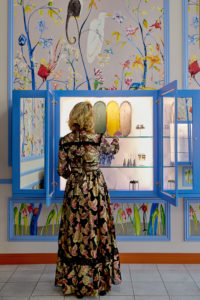
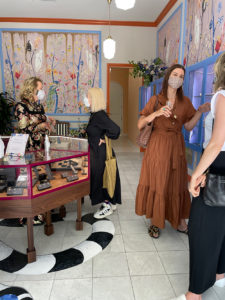
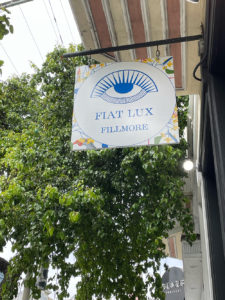



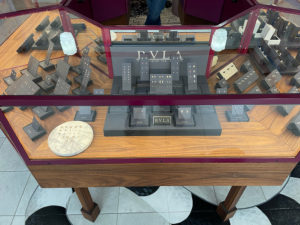


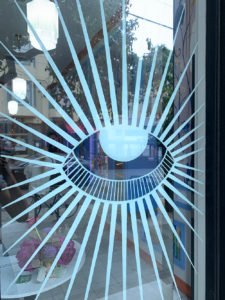
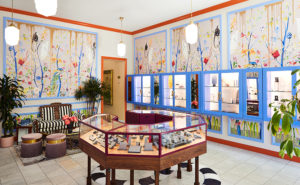
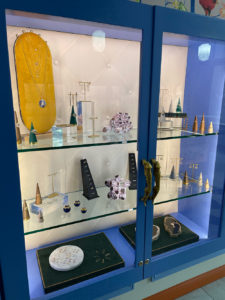
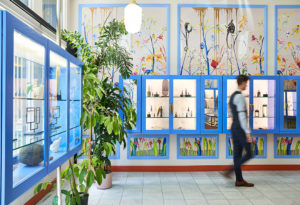
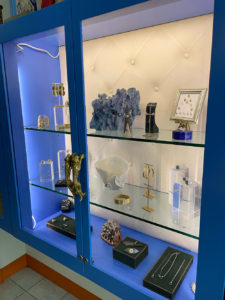
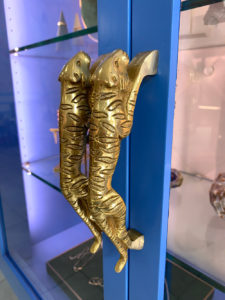
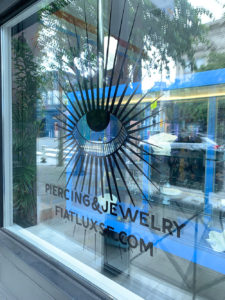
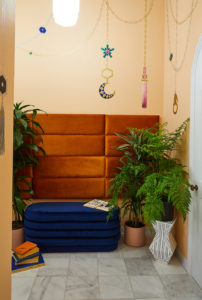

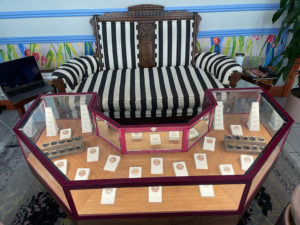
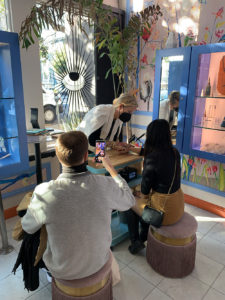
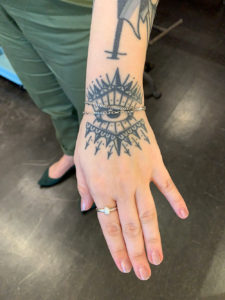

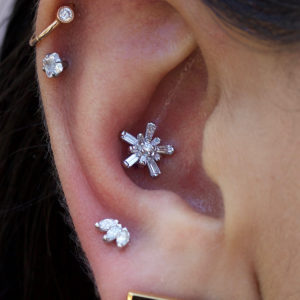
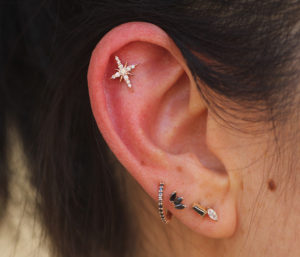

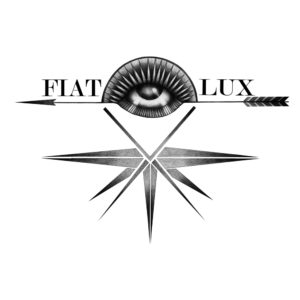
No comments:
Post a Comment